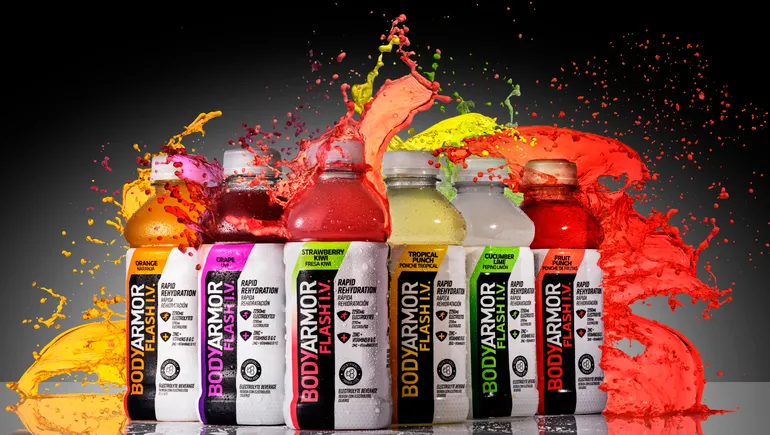Why hydration drinks are quenching the beverage industry’s thirst for product growth

When Unilever bought electrolyte-infused beverage mix maker Liquid I.V. for an undisclosed amount in 2020, it could have amounted to a pandemic fad, as consumers sought out food and beverage items with added health benefits. But the hydration drinks category has since proven steadily lucrative — with major companies eager to capture the many thirsty consumers looking for new beverage alternatives.
The craze originated in the mid-2010’s with the success of Pedialyte, an electrolyte-infused beverage used to treat dehydration in infants. Previously only a staple of the baby food aisle, it gained popularity in the 2010’s among college students and young consumers looking for a hangover cure. The brand appeared in tents at the Coachella Music Festival in 2018 and influencers began promoting the drink more prominently.
Erwin Henriquez, a beverage industry expert from Euromonitor International, said this was an unintended consequence for a beverage that cured dehydration.
“It wasn’t necessarily a consumption occasion that Pedialyte was actually pursuing, it was just young people figuring out that they could use the drink in a different way,” Henriquez said.
In recent years, many of the behemoths in the beverage space, along with smaller brands, have acquired or developed hydration-focused beverage brands to differentiate themselves.
PepsiCo officially launched Gatorade Water last month, as the sports drink staple seeks to keep the brand relevant amid a changing environment. Sports drink BodyArmor — purchased for $5.6 billion by Coca-Cola in 2021, its largest acquisition to date — entered the category last year with BodyArmor Flash I.V., available in bottles and in a powder format which it launched last fall. Keurig Dr Pepper reached an agreement last October to sell and distribute Electrolit, available in a variety of flavors at convenience stores alongside energy drinks. And Waterdrop sells electrolyte-infused cubes that create “microdrinks” when added to water.
The electrolyte drinks market is projected to be worth nearly $59 billion by 2032, growing at a compound annual growth rate of 5.9%, according to Precedence Research.

Electrolit’s zero-sugar varieties.
Courtesy of Electrolit
Are the drinks better-for-you?
For experts in the beverage industry, the rapid growth marks a significant change, particularly in the beverage mix category which had been in decline with brands like Crystal Light falling in popularity with consumers seeking trendier offerings.
“I’ve been getting emails from companies all around the world asking, ‘Why are powder mixes and concentrate growing so fast?’ It had been dying off in the last decade because consumers thought of them as highly sugary and not natural products,” Henriquez said. “Here I think consumers feel like they’re actually making a choice to add something to their drink that makes it better for them, and that’s a powerful connection that wasn’t there before in sweet, fruity concentrate mixes.”
But while the need for hydration is addressed with the products, their nutritional attributes and functionality may be hard to achieve at the same time.
Liquid I.V., known for its powder packets that are poured and stirred into water, launched a zero-sugar line last year, containing an amino acid allulose blend to sweeten the drinks, according to the brand. Henriquez said the offerings without sugar do not contain as many electrolytes as its offerings with sugar, which could create a conundrum for brands looking to also maintain a low or flat sugar count.
Henriquez said he wouldn’t be surprised if leading energy drink brands begin selling powdered concentrate versions of their drinks to capitalize on the shift toward hydration.
“You can see companies starting to merge the concept of hydration and energy, with companies like Celsius saying that it’s an energy drink but also a sports drink with amino acids and all this other stuff that’s adjacent to hydration,” Henriquez said.
Source: fooddive.com

